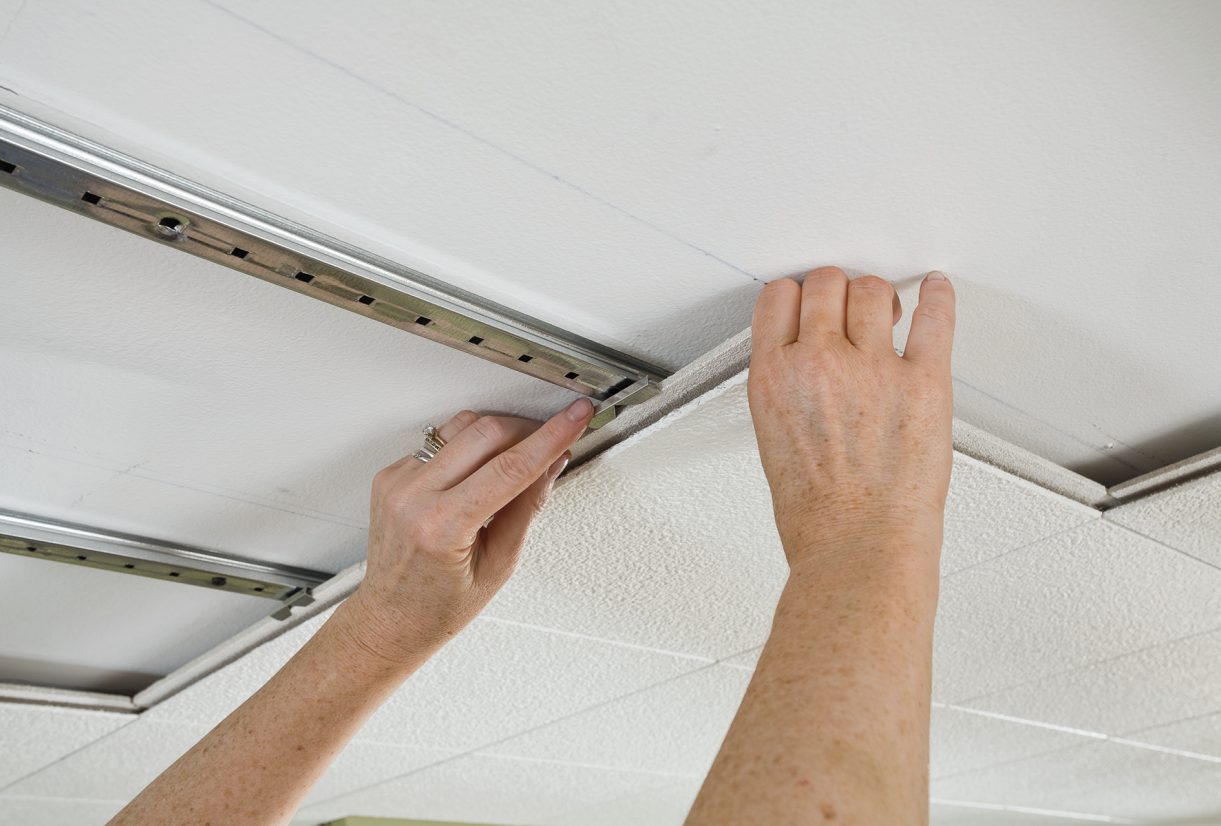

Articles
How Big Is A Ceiling Tile
Modified: August 22, 2024
Discover the exact dimensions of ceiling tiles in this comprehensive article. Learn how to measure and choose the perfect size for your space.
(Many of the links in this article redirect to a specific reviewed product. Your purchase of these products through affiliate links helps to generate commission for Storables.com, at no extra cost. Learn more)
Introduction
Ceiling tiles are an essential component of interior design, whether for residential, commercial, or industrial spaces. They not only add aesthetic appeal but also serve functional purposes such as soundproofing and insulation. But have you ever wondered just how big a ceiling tile is?
In this article, we will explore the standard sizes, thickness, materials, weight, installation methods, common uses, cost, and maintenance of ceiling tiles. Whether you are a homeowner looking to renovate your space or a contractor searching for the perfect ceiling tile, this comprehensive guide will provide you with all the information you need to know about the size of ceiling tiles.
So, let’s dive in and discover exactly how big ceiling tiles can be!
Key Takeaways:
- Understanding the standard sizes, thickness, materials, weight, installation methods, common uses, cost, and maintenance of ceiling tiles is crucial for making informed decisions in interior design projects.
- Proper maintenance and cleaning of ceiling tiles are essential to preserve their appearance, functionality, and longevity, ensuring they continue to enhance the aesthetics and functionality of indoor spaces.
Read more: How To Cut Ceiling Tile
Standard Sizes of Ceiling Tiles
Ceiling tiles come in various sizes to fit different spaces and design requirements. The standard sizes are determined by industry standards and provide a range of options for various applications. Here are some of the commonly used standard sizes of ceiling tiles:
- 12″ x 12″ – This is the most popular size for ceiling tiles. It is often used in residential homes, offices, and small commercial spaces. The 12″ x 12″ size is ideal for covering small areas or creating a classic grid pattern on the ceiling.
- 24″ x 24″ – Another commonly used size is the 24″ x 24″ tile. It is often seen in larger commercial spaces such as hotels, retail stores, and restaurants. The bigger size allows for faster installation and can create a more open and spacious feel.
- 24″ x 48″ – This larger size is typically used in commercial, industrial, and institutional settings where larger uninterrupted ceiling areas need to be covered. It is ideal for spaces such as hospitals, schools, and warehouses.
- Other sizes – In addition to the standard sizes mentioned above, ceiling tiles can also come in various other sizes, such as 12″ x 24″ or 16″ x 16″. These sizes offer more flexibility in design and can be used to create custom patterns or accommodate specific architectural requirements.
When choosing the size of your ceiling tiles, it’s important to consider the dimensions of your space, the overall design aesthetic you wish to achieve, and any specific limitations or requirements of the project.
It’s also worth noting that some manufacturers may offer custom-sized ceiling tiles, allowing you to tailor the size to your exact specifications. However, these custom options may come at a higher cost and may require longer lead times for production.
Now that you have a better understanding of the standard sizes of ceiling tiles, let’s explore the thickness of these tiles and how it can impact their performance.
Thickness of Ceiling Tiles
The thickness of ceiling tiles plays a crucial role in their performance and durability. It determines their ability to withstand weight, resist moisture, and provide effective insulation. Here are the common thickness options available for ceiling tiles:
- 1/2 inch – Ceiling tiles with a thickness of 1/2 inch are often used in residential and light commercial applications. They are lightweight and easy to install, making them an excellent choice for DIY projects. However, they may not provide as much insulation or soundproofing as thicker tiles.
- 5/8 inch – Tiles with a thickness of 5/8 inch are commonly used in commercial and industrial spaces. The added thickness enhances their structural integrity and fire resistance, making them more suitable for high-traffic areas or places with strict building code requirements.
- Other thicknesses – In addition to the 1/2 inch and 5/8 inch options, some manufacturers offer ceiling tiles in other thicknesses, such as 3/4 inch or 1 inch. These thicker tiles are typically used in specialized applications where increased durability or superior insulation is essential.
Selecting the appropriate thickness for your ceiling tiles depends on factors such as the desired level of acoustics, the location of the installation, and any specific building code requirements. It’s essential to consult with a professional or refer to the manufacturer’s guidelines to ensure you choose the right thickness for your project.
Next, let’s explore the different materials used for ceiling tiles and the benefits they offer.
Material Options for Ceiling Tiles
Ceiling tiles are available in a variety of materials, each with its own unique set of properties and advantages. The choice of material depends on factors such as design preferences, functionality, and budget. Here are some popular material options for ceiling tiles:
- Mineral Fiber – Mineral fiber ceiling tiles are made from a combination of natural and synthetic materials, including mineral wool and fiberglass. They are highly durable, fire-resistant, and offer excellent acoustic properties. Mineral fiber tiles are a common choice for commercial spaces as they provide efficient sound absorption and can help reduce noise pollution.
- Acoustic – Acoustic ceiling tiles are specifically designed to enhance sound absorption. They are typically made from materials such as mineral fiber, fiberglass, or perforated metal. Acoustic tiles are commonly used in areas where noise reduction is crucial, such as auditoriums, conference rooms, or recording studios.
- PVC – PVC (Polyvinyl chloride) ceiling tiles are known for their durability and water-resistant properties. They are easy to clean and maintain and are often used in areas prone to moisture, such as bathrooms or kitchens. PVC tiles are available in a wide range of designs and patterns, making them a versatile option for both residential and commercial spaces.
- Metal – Metal ceiling tiles add a sleek and modern touch to any space. They are made from lightweight materials such as aluminum or steel and offer excellent durability and resistance to staining and corrosion. Metal tiles are commonly used in contemporary interior designs and can be found in commercial buildings, restaurants, or high-end homes.
- Wood – Wood ceiling tiles bring warmth and natural beauty to any space. They exude elegance and can create a rustic or luxurious atmosphere, depending on the type of wood used. Wood tiles are often used in spaces where aesthetics are a priority, such as hotels, restaurants, or upscale residential settings.
- Gypsum – Gypsum ceiling tiles, also known as plasterboard or drywall, consist of a gypsum core covered by a paper facing. They are known for their versatility and affordability. Gypsum tiles can be easily installed and provide good fire resistance and sound insulation. They are commonly used in residential applications or areas with low to moderate traffic.
When choosing the material for your ceiling tiles, consider factors such as the desired aesthetic, functional requirements, maintenance needs, and budget. It’s also crucial to ensure that the chosen material complies with any environmental regulations or building codes specific to your jurisdiction.
Now that we have explored the material options for ceiling tiles, let’s move on to discussing the weight of these tiles and its impact on installation and structural considerations.
Weight of Ceiling Tiles
The weight of ceiling tiles is an important consideration during installation and should be taken into account to ensure the safety and stability of the ceiling structure. The weight of ceiling tiles can vary depending on the material used and the thickness of the tiles. Here are some general guidelines regarding the weight of different types of ceiling tiles:
- Mineral Fiber and Acoustic Tiles – These tiles are relatively lightweight. On average, mineral fiber and acoustic tiles weigh around 0.75 to 1.5 pounds per square foot. This makes them suitable for both residential and commercial applications, as they put less strain on the ceiling structure.
- PVC and Metal Tiles – PVC and metal tiles are slightly heavier compared to mineral fiber and acoustic tiles. The weight of PVC and metal tiles ranges from 1.5 to 2.5 pounds per square foot. While this weight increase is minimal, it is still important to ensure that the ceiling structure can support the added weight, especially in older buildings or structures with specific load-bearing limitations.
- Wood and Gypsum Tiles – Wood and gypsum tiles tend to be heavier compared to other materials. Wood tiles can weigh around 2.5 to 3.5 pounds per square foot, while gypsum tiles typically weigh around 3 to 4 pounds per square foot. It is crucial to assess the structural capacity of the ceiling and consult with a professional if considering these heavier tile options.
When planning the installation of ceiling tiles, it is essential to understand the weight-bearing capacity of the existing ceiling structure. If necessary, a structural engineer should be consulted to assess the load-bearing capacity and ensure that the structure can support the chosen type and weight of ceiling tiles.
In situations where the weight of the ceiling tiles is a concern, alternative installation methods such as suspended ceiling systems or reinforcing the existing ceiling structure may be considered to distribute the weight more evenly and ensure the integrity of the ceiling.
Now that we have covered the weight of ceiling tiles, let’s move on to discussing the various installation methods commonly used for ceiling tiles.
Ceiling tiles typically come in standard sizes of 2 feet by 2 feet or 2 feet by 4 feet. When measuring for replacement or installation, be sure to measure the exact dimensions of the existing tiles to ensure a proper fit.
Read more: How To Tile A Shower Ceiling
Installation Methods for Ceiling Tiles
Installing ceiling tiles can be done using various methods, depending on the type of tiles, the desired look, and the existing ceiling structure. Here are some common installation methods for ceiling tiles:
- Direct Mount – The most straightforward installation method is the direct mount, where the tiles are attached directly to the ceiling surface using adhesive or nails. This method is commonly used for lightweight tiles such as mineral fiber or PVC tiles. It offers a seamless look and is relatively quick and easy to install.
- Suspended Grid – The suspended grid system is a popular method used for larger and heavier ceiling tiles. It involves creating a grid system using metal tracks and suspending the tiles from the grid with wires. This method allows for easy access to the space above the ceiling tiles and is commonly used in commercial and industrial settings.
- Clip-In – Clip-in ceiling tile installation involves placing the tiles onto a specially designed track system without the need for adhesives or fasteners. The tiles have small clips on their edges that securely lock them into the supporting tracks. This method offers a clean and professional look and makes it easy to remove and replace individual tiles if necessary.
- Lay-In – Lay-in ceiling tile installation involves placing the tiles onto a grid system without any additional attachment methods. The tiles rest on the metal tracks without the need for clips or adhesive. This method is commonly used for large, lightweight tiles and allows for easy removal and replacement of tiles.
When determining the installation method for your ceiling tiles, consider factors such as the weight and size of the tiles, the desired accessibility, and the existing ceiling structure. It’s also important to follow the manufacturer’s guidelines and specifications for proper installation.
Now that we have covered the installation methods, let’s explore the common uses for ceiling tiles in various settings.
Common Uses for Ceiling Tiles
Ceiling tiles serve numerous practical and aesthetic purposes in various settings. Their versatility and ability to transform the look and feel of a space make them a popular choice for both residential and commercial applications. Here are some common uses for ceiling tiles:
- Residential Spaces – In residential settings, ceiling tiles are often used to enhance the visual appeal of a room. They can add texture, depth, and architectural interest to ceilings, creating a more visually appealing and polished look. Ceiling tiles are commonly used in living rooms, bedrooms, kitchens, and basements to enhance the overall design aesthetics.
- Commercial Buildings – Ceiling tiles are widely used in commercial buildings such as offices, retail stores, restaurants, and hotels. They contribute to the overall interior design, creating a professional and welcoming environment. Ceiling tiles offer options for acoustic control, fire resistance, and improved lighting efficiency, making them an excellent choice for these spaces.
- Healthcare Facilities – Ceiling tiles play a crucial role in healthcare facilities, where hygiene and acoustic control are essential. They are commonly used in hospitals, clinics, and care centers to help control infectious airborne particles, reduce noise levels, and provide a clean and aesthetically pleasing environment.
- Educational Institutions – Schools, universities, and educational institutions utilize ceiling tiles to enhance learning environments. Ceiling tiles are chosen for their acoustic properties, which help reduce noise distractions and create a conducive space for teaching and learning. They are also used to improve lighting efficiency and add visual interest to classrooms, libraries, and study areas.
- Hospitality Sector – Ceiling tiles are an integral part of the hospitality sector. They are used in hotels, resorts, restaurants, and entertainment venues to create a visually pleasing and comfortable ambiance. Ceiling tiles can add elegance, acoustical control, and lighting enhancements to enhance the overall guest experience.
These are just a few examples of the wide range of applications for ceiling tiles. The versatility of ceiling tiles allows them to be used in virtually any indoor space where aesthetics, functionality, and comfort are important.
Next, let’s explore the cost aspect of ceiling tiles and how it can vary based on factors such as material, size, and design.
Cost of Ceiling Tiles
The cost of ceiling tiles varies depending on several factors, including the material, size, design, and brand. Understanding these factors can help you determine a budget for your ceiling tile project. Here are some considerations when it comes to the cost of ceiling tiles:
- Material – The material of the ceiling tiles greatly influences the cost. Generally, mineral fiber and gypsum tiles tend to be more budget-friendly compared to materials like wood or metal. PVC tiles fall in the middle range, while specialty materials or custom designs can be more expensive.
- Size – The size of the ceiling tiles also affects the cost. Larger tiles are often more expensive than smaller ones due to the increased material required and potentially more complex manufacturing processes.
- Design and Finish – Ceiling tiles with intricate designs or unique finishes usually come at a higher price point. Custom patterns, embossed textures, or specialty finishes can add a premium to the cost of the tiles.
- Brand and Quality – Well-known and reputable brands may command a higher price due to their quality and reputation. However, it’s important to strike a balance between quality and budget to ensure you get the best value for your investment.
- Quantity – The total quantity of ceiling tiles needed for your project will impact the overall cost. Buying in bulk or larger quantities may lead to discounted rates from suppliers or manufacturers.
As a rough estimate, the cost of ceiling tiles can range from around $1 to $15 per square foot, depending on the above factors. It’s important to obtain quotes from different suppliers and manufacturers and understand what is included in the pricing (e.g., accessories, installation materials) to make an informed decision.
Keep in mind that the cost of the tiles is just one aspect of the overall project budget. Additional expenses to consider include installation labor, adhesive or mounting materials, and any necessary tools or equipment for the installation process.
It’s recommended to consult with professionals or industry experts to get accurate cost estimates based on your specific requirements and project scope.
Now that we have covered the cost aspect, let’s discuss the maintenance and cleaning of ceiling tiles to ensure their longevity and performance.
Maintenance and Cleaning of Ceiling Tiles
Maintaining and cleaning ceiling tiles is essential to preserve their appearance, functionality, and longevity. Regular maintenance can help prevent the buildup of dirt, stains, and mold, ensuring that the tiles retain their original aesthetic appeal. Here are some guidelines for maintaining and cleaning ceiling tiles:
- Dusting – Regular dusting is a simple yet effective way to keep ceiling tiles clean. Use a soft-bristle brush or a dusting wand to gently sweep away any dust, cobwebs, or other particles that may accumulate on the surface of the tiles. Avoid using rough materials or excessive pressure, as this may damage or dislodge the tiles.
- Vacuuming – If your ceiling tiles have textured surfaces or intricate patterns, vacuuming can be an efficient way to remove dust and debris. Use a handheld vacuum cleaner with a brush attachment to gently suction the surface of the tiles. Be careful not to apply too much pressure, as this could cause the tiles to loosen or break.
- Stain Removal – In the event of stains on the ceiling tiles, it’s important to take appropriate measures for removal. For water-based stains, such as coffee or juice spills, gently dab the affected area with a damp cloth or sponge using a mild detergent solution. For oil-based stains, like grease or makeup, use a mild solvent or stain remover specifically formulated for the tile material. Test any cleaning solution on a small, inconspicuous area of the tile first to ensure it does not cause discoloration or damage.
- Mold Prevention – To prevent mold growth on ceiling tiles, it’s crucial to maintain proper ventilation and control humidity levels in the space. Keep the area well-ventilated and ensure adequate airflow to prevent moisture buildup. Regularly inspect the tiles for any signs of mold or mildew. If mold is present, consult a professional for appropriate remediation techniques to ensure the safety of both the tiles and the occupants of the space.
- Professional Cleaning – In some cases, professional cleaning services may be required for deep cleaning or restoration of ceiling tiles. Professional cleaners have the expertise, equipment, and specialized products to effectively clean and restore ceiling tiles, especially those that are heavily soiled or damaged.
It’s important to note that the maintenance and cleaning requirements may vary depending on the type of ceiling tile material. Always refer to the manufacturer’s guidelines and recommendations for the specific maintenance and cleaning instructions for your chosen tiles.
By following proper maintenance and cleaning practices, you can prolong the lifespan of your ceiling tiles, keep them looking fresh and vibrant, and ensure they continue to perform their intended functions.
Now that we’ve covered the maintenance and cleaning aspect, let’s conclude our article.
Read more: What Is A Ceiling Tile Made Of
Conclusion
Ceiling tiles are an integral part of interior design, offering both aesthetic and functional benefits to residential, commercial, and industrial spaces. Throughout this article, we have explored the various aspects of ceiling tiles, including their standard sizes, thickness, materials, weight, installation methods, common uses, cost, and maintenance. By understanding these factors, you can make informed decisions when it comes to selecting and maintaining ceiling tiles for your project.
We learned that ceiling tiles come in different standard sizes, such as 12″ x 12″, 24″ x 24″, and 24″ x 48″, to accommodate various spaces and design preferences. The thickness of the tiles is an important consideration, with options ranging from 1/2 inch to 5/8 inch or even thicker for specialized applications.
When it comes to materials, ceiling tiles are available in mineral fiber, PVC, metal, wood, gypsum, and more. Each material offers unique properties and advantages, allowing you to choose the option that best suits your needs in terms of aesthetics, durability, and maintenance.
The weight of ceiling tiles should be carefully considered to ensure the structural integrity of the ceiling. Lighter tiles are preferred for residential applications, while heavier tiles may be more suitable for commercial or industrial settings, where load-bearing capacity is essential.
Installation methods for ceiling tiles range from direct mount to suspended grid, clip-in, and lay-in systems. Choosing the right installation method depends on factors such as tile type, design, and accessibility requirements.
Ceiling tiles find common use in residential spaces, commercial buildings, healthcare facilities, educational institutions, and the hospitality sector. They contribute to the overall aesthetics, acoustics, and functionality of these spaces, enhancing the experience for occupants and visitors alike.
When it comes to cost, the price of ceiling tiles can vary based on material, size, design, and brand. It’s important to consider both the upfront cost of the tiles and any additional expenses such as labor and installation materials when budgeting for your project.
Proper maintenance and cleaning of ceiling tiles are crucial to preserve their appearance and performance. Regular dusting, vacuuming, stain removal, and mold prevention measures will ensure that your ceiling tiles stay vibrant and functional for years to come.
In conclusion, understanding the size, thickness, material options, weight, installation methods, common uses, cost, and maintenance of ceiling tiles is essential for making informed decisions and achieving the desired results in your interior design projects. By considering these factors, you can select the right ceiling tiles that meet your aesthetic, functional, and budgetary requirements, ultimately creating a beautiful and well-designed space.
Frequently Asked Questions about How Big Is A Ceiling Tile
Was this page helpful?
At Storables.com, we guarantee accurate and reliable information. Our content, validated by Expert Board Contributors, is crafted following stringent Editorial Policies. We're committed to providing you with well-researched, expert-backed insights for all your informational needs.

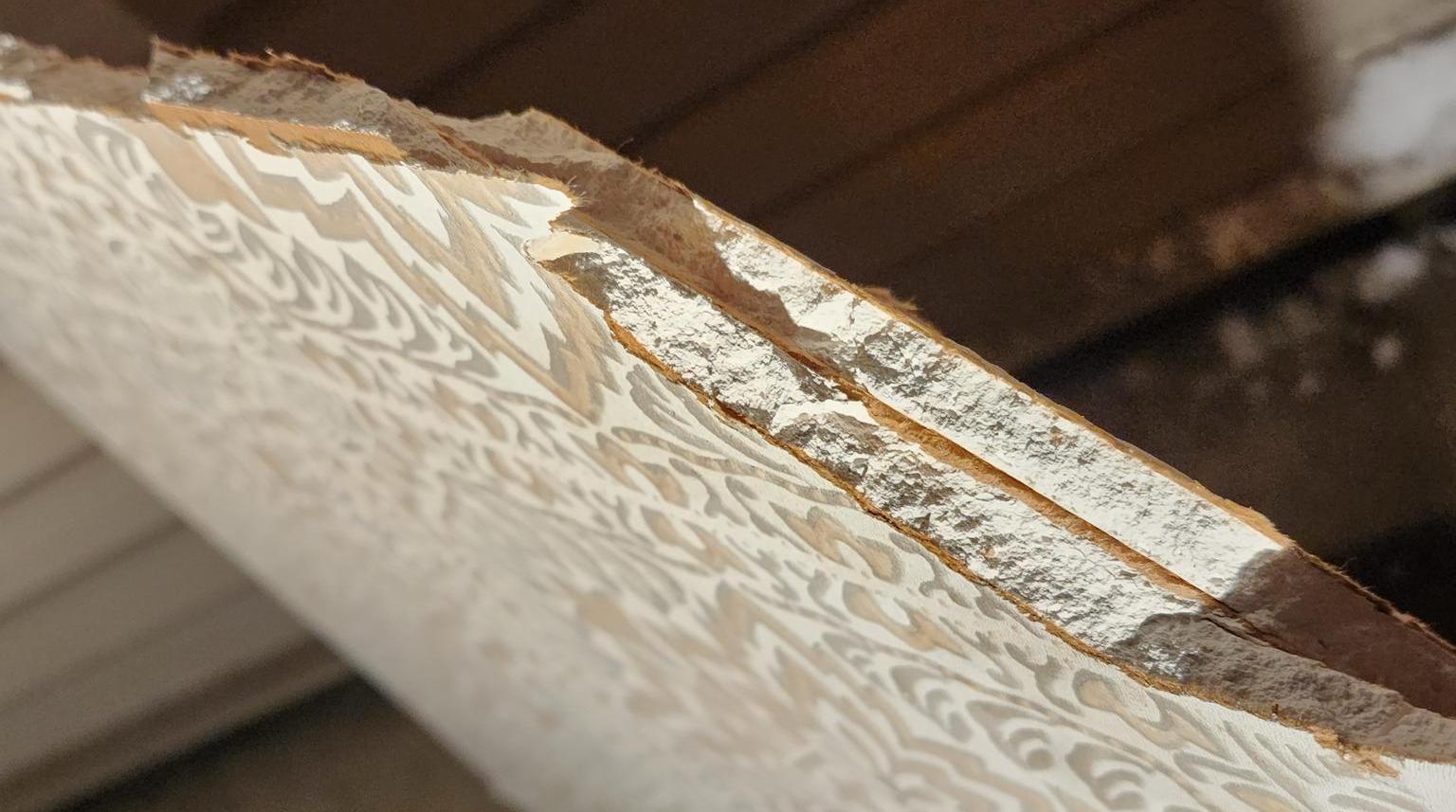

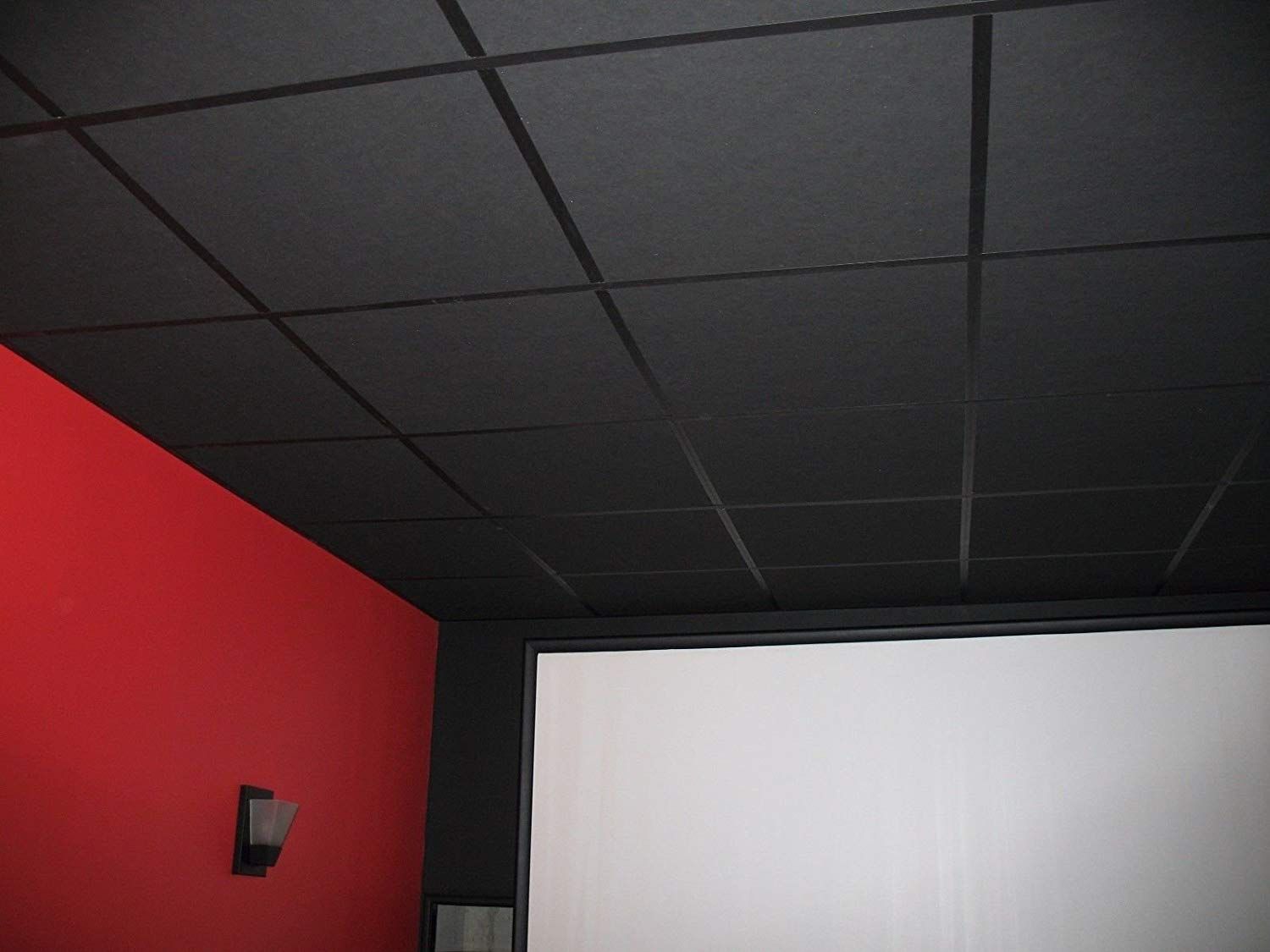
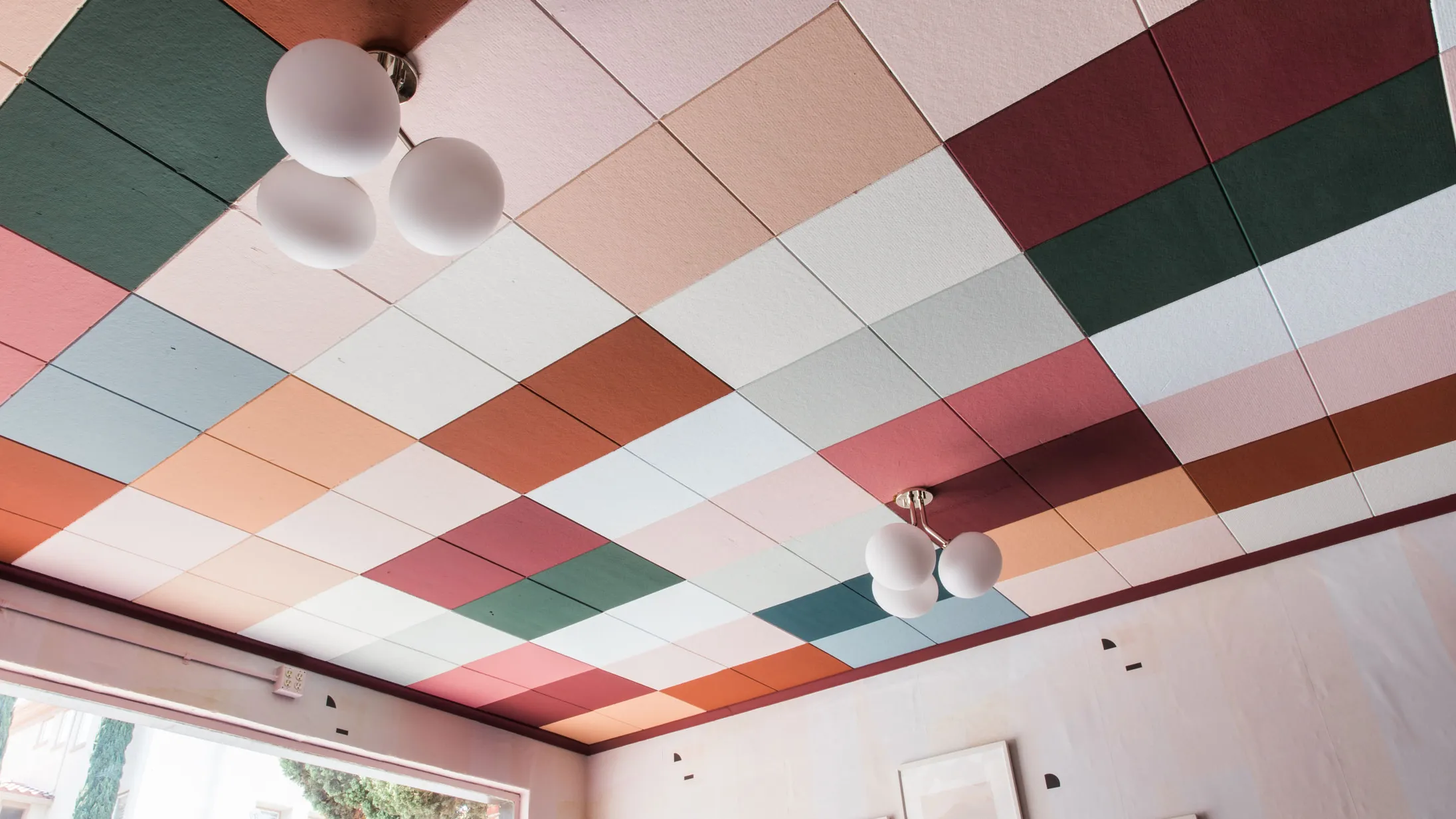

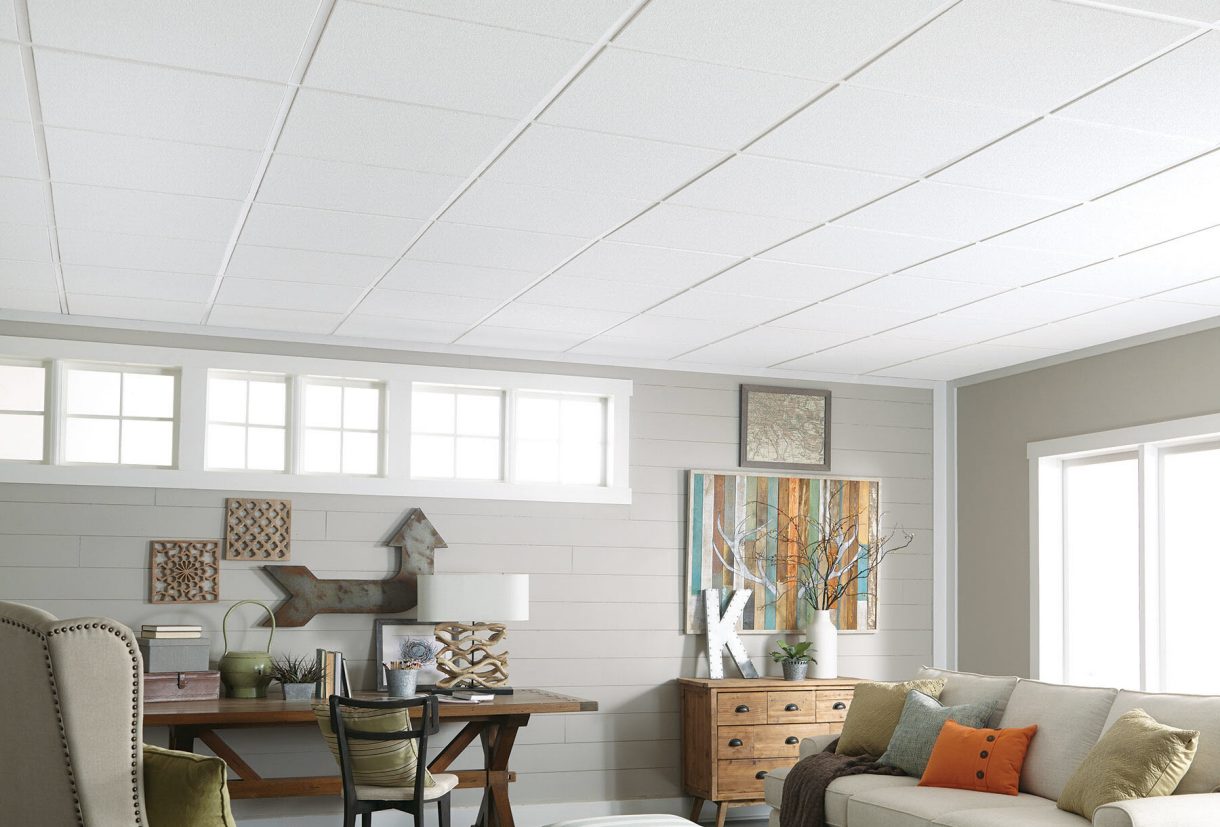
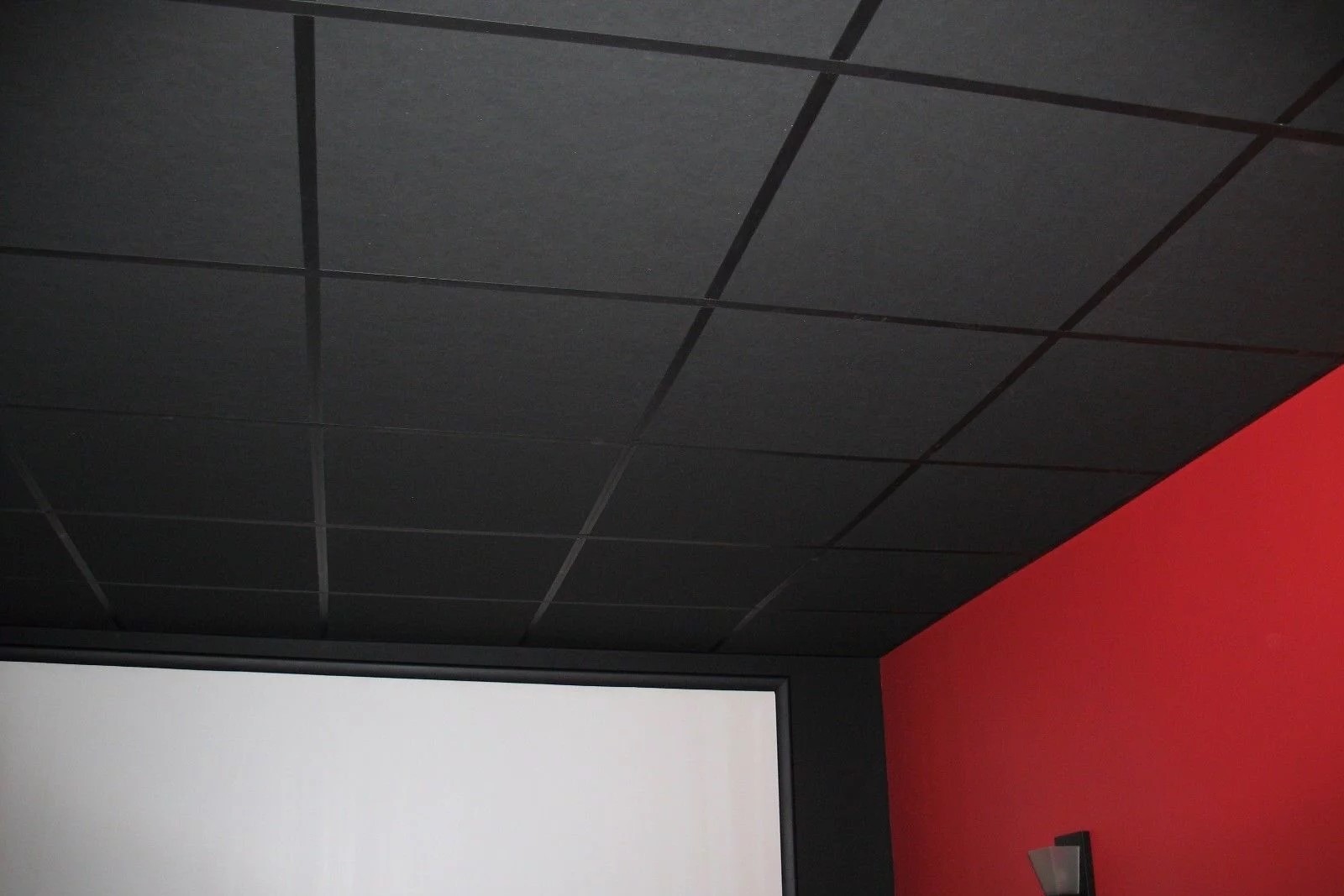
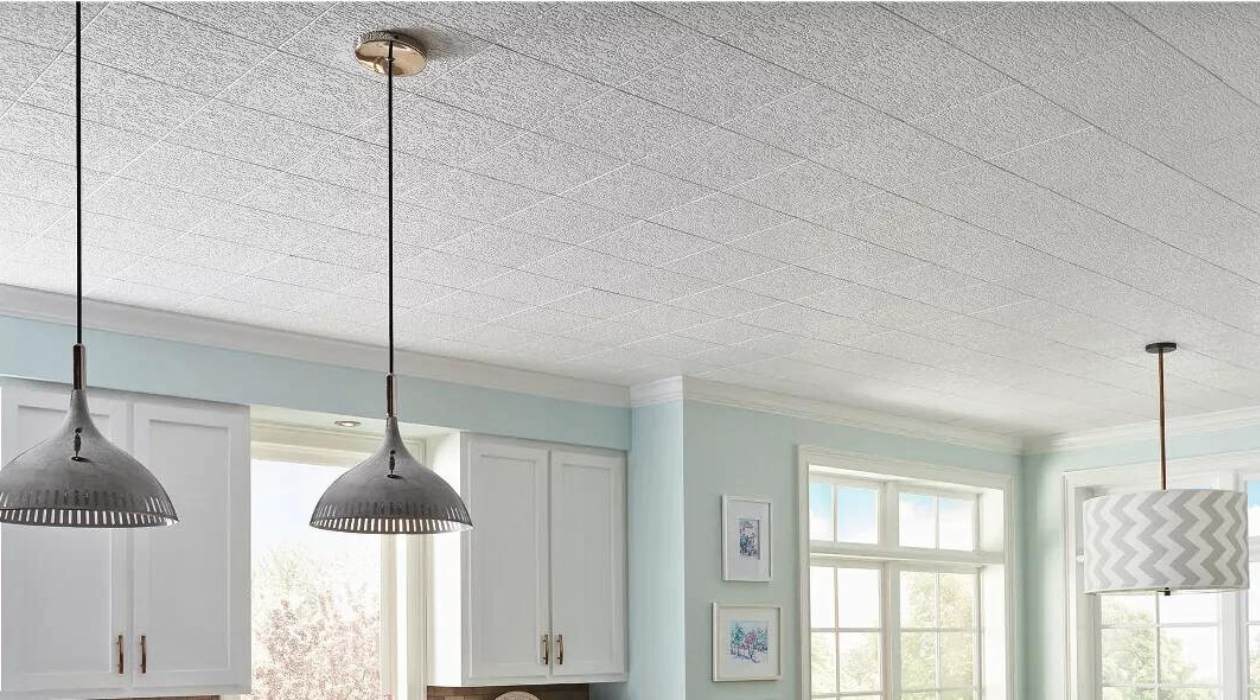

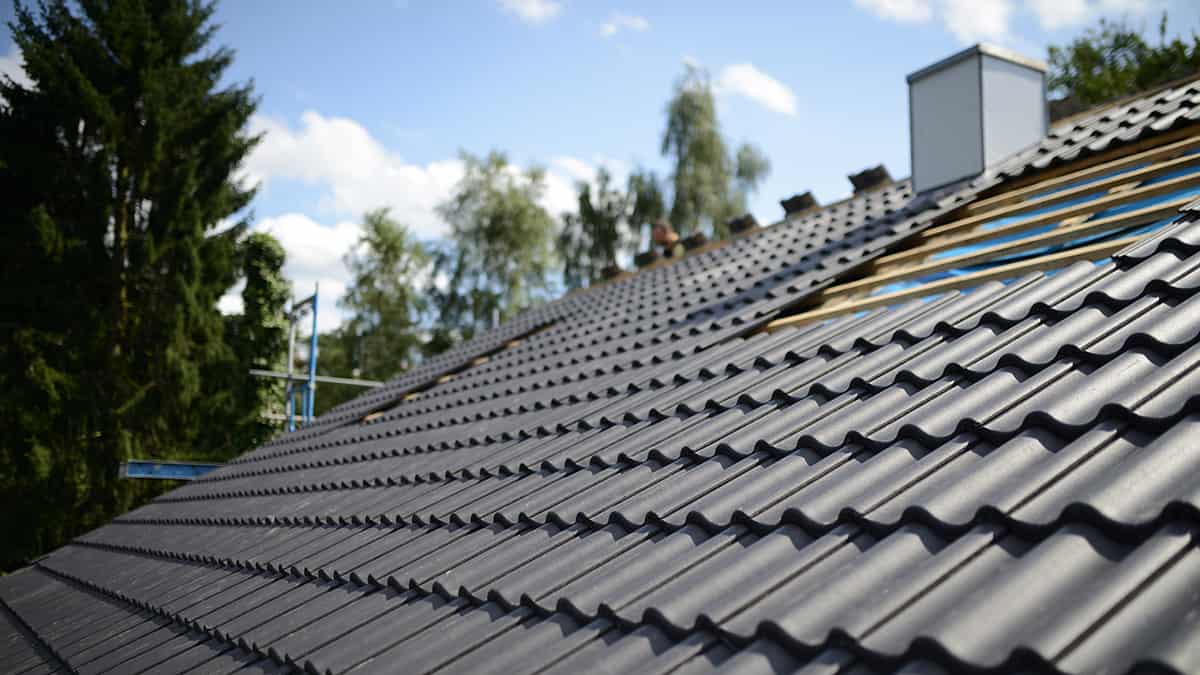



0 thoughts on “How Big Is A Ceiling Tile”